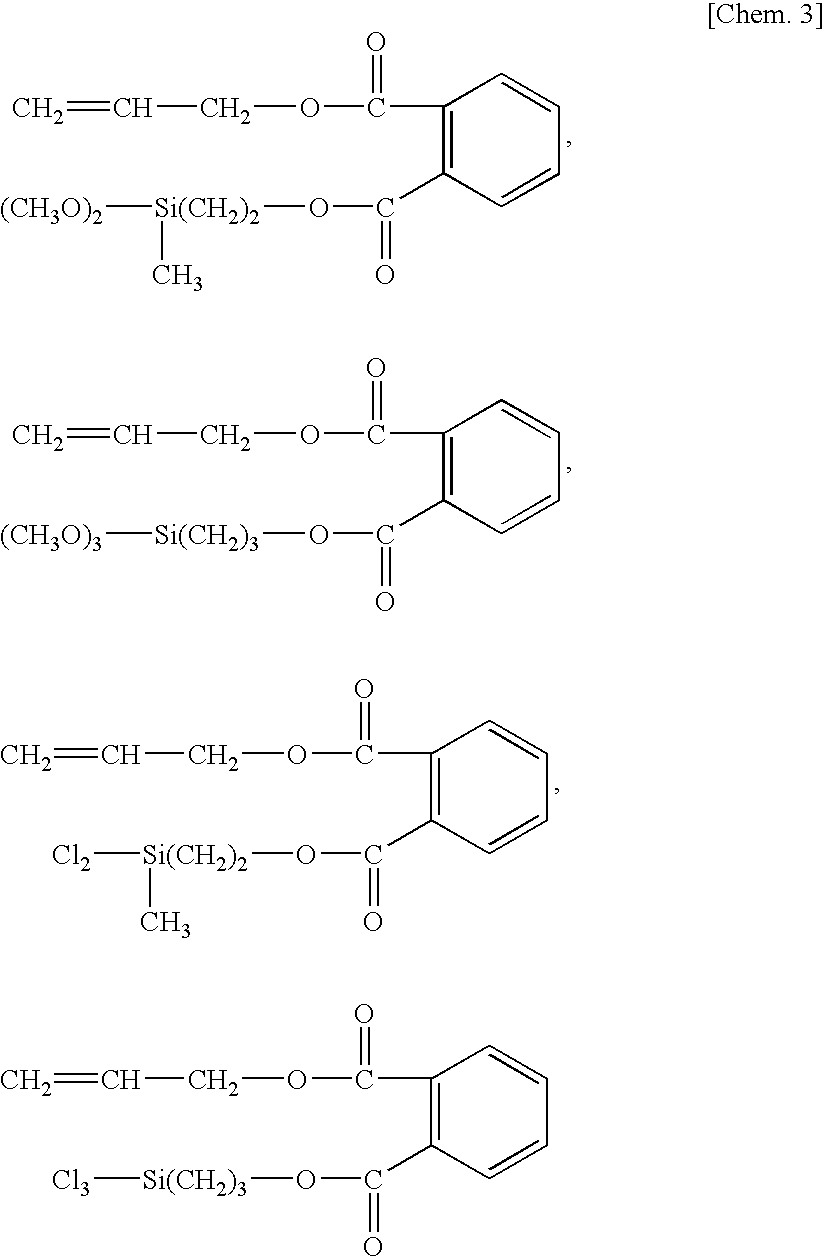Oxide fine particle-containing resin composition and process for production thereof
- Summary
- Abstract
- Description
- Claims
- Application Information
AI Technical Summary
Benefits of technology
Problems solved by technology
Method used
Image
Examples
preparation example 1
[0142]A reactor equipped with a reflux condenser and a stirrer was charged with 55 parts of methyl methacrylate, 5 parts of 2-ethylhexyl acrylate, 5 parts of cyclohexyl methacrylate, 10 parts of γ-methacryloxypropyltrimethoxysilane, 20 parts of glycidyl methacrylate, 5 parts of 4-(meth)acryloyloxy-2,2,6,6-tetramethylpiperidine, 75 parts of i-butyl alcohol, 50 parts of methyl ethyl ketone and 25 parts of methanol. These materials were mixed and heated to 80° C. with stirring. To the mixture, a solution of 3 parts of azobisisovaleronitrile in 8 parts of xylene was added dropwise over a period of 30 minutes, and reaction was performed at 80° C. for 5 hours. The reaction liquid was cooled, and 36 parts of methyl ethyl ketone was added. The resultant solution contained a specific silyl group-containing polymer (B-1) that had a solid concentration of 35%, a GPC Mw of 12,000 and a silicon content in the solid of 1.1 wt %.
preparation example 2
[0143]The procedures of Preparation Example 1 were repeated except that 20 parts of 2-hydroxyethyl methacrylate was used in place of glycidyl methacrylate, resulting in a solution that contained a specific silyl group-containing polymer (B-2) having a solid concentration of 35%, a Mw of 13,000 and a silicon content in the solid of 1.1 wt %.
preparation example 3
[0144]A reactor equipped with a reflux condenser and a stirrer was charged with 30 parts of methyl methacrylate, 10 parts of n-butyl acrylate, 10 parts of γ-methacryloxypropyltrimethoxysilane, 20 parts of glycidyl methacrylate, 10 parts of 4-(meth)acryloyloxy-2,2,6,6-tetramethylpiperidine, 20 parts of 2-(2′-hydroxy-5′-methacryloxyethylphenyl)-2H-benzotriazole, 75 parts of i-butyl alcohol, 50 parts of methyl ethyl ketone and 25 parts of methanol. These materials were mixed and heated to 80° C. with stirring. To the mixture, a solution of 4 parts of azobisisovaleronitrile in 10 parts of xylene was added dropwise over a period of 30 minutes, and reaction was performed at 80° C. for 5 hours. The reaction liquid was cooled, and 36 parts of methyl ethyl ketone was added. The resultant solution contained a specific silyl group-containing polymer (B-3) that had a solid concentration of 35%, a GPC Mw of 10,000 and a silicon content in the solid of 1.1 wt %.
PUM
| Property | Measurement | Unit |
|---|---|---|
| Percent by mass | aaaaa | aaaaa |
| Percent by mass | aaaaa | aaaaa |
| Weight | aaaaa | aaaaa |
Abstract
Description
Claims
Application Information
 Login to View More
Login to View More - R&D
- Intellectual Property
- Life Sciences
- Materials
- Tech Scout
- Unparalleled Data Quality
- Higher Quality Content
- 60% Fewer Hallucinations
Browse by: Latest US Patents, China's latest patents, Technical Efficacy Thesaurus, Application Domain, Technology Topic, Popular Technical Reports.
© 2025 PatSnap. All rights reserved.Legal|Privacy policy|Modern Slavery Act Transparency Statement|Sitemap|About US| Contact US: help@patsnap.com



